Poultry Breeding
Poultry breeding
Poultry breeding is done by a wide range of people for diverse end uses and purposes. Poultry breeding can be divided into three main areas which include:
-
Commercial breeding
Chicken is by far the most popular poultry species utilised by Australians for both meat and egg production. Breeding for the commercial poultry sector is on a large industrial scale and hatcheries supply both the broiler and layer industries. In Australia, the term “broiler” or “meat chicken” is used by the industry to describe a chicken grown for meat, while the term “layer” is used for chickens grown and maintained for egg production. Chickens are also affectionately referred to as “chooks”. Other poultry species such as Turkeys, Ducks & Geese, and game birds such as Quails are also produced in Australia for meat. Emus and Ostriches are also bred for commercial purposes.
-
Village/Backyard breeding
Many farmers and some suburban householders still like to keep their own poultry for egg and meat production. Most of them buy commercial crossbred hens at the point of lay and keep them in semi-intensive conditions in the yard. Some use small colony cages or even use a few layer cages in a protected spot. Others buy day-old chicks and rear their own birds.
-
Fancy/Exhibition breeding
There are many breeds of poultry which play very little part in the commercial poultry industry. These are called fancy poultry and are usually kept by small producers (or fanciers) who enjoy breeding, showing and exchanging birds with other fanciers.
Commercial poultry breeding
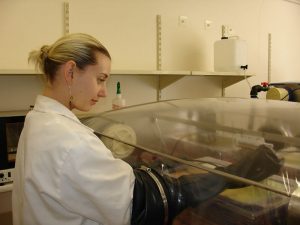
The poultry industry breeds chickens destined for both commercial egg and meat production. Geneticists design special breeding programs to select birds with the best characteristics for egg or meat production. This selection process (called genetic selection or genetics) allows the industry to select strains of birds which are produced very efficiently in intensive housing systems. There are two main types of commercial chicken breeds: layers and meat (broiler) chickens.
Forming an egg
The hen releases a yolk with the egg cell in it from her ovary where it moves into the oviduct (egg production tube). When a cockerel and a hen are mated, the sperm cells from the cockerel fertilise the egg cell at the top of the oviduct (fertilisation is the joining of the female egg cell with the male sperm cell). The fertilised egg yolk then takes 23-26 hours to pass down the oviduct, during which time layers of egg white (albumen) are laid down. Two layers of egg membranes are then overlaid, and finally the eggshell. If an egg is not fertilised, it still goes through the same process in the oviduct but it will not develop into a chick.
The egg
Although the surface of the egg is covered with bacteria, it has its own protective mechanisms in place to prevent the bacteria spoiling the egg. These are:
- The egg cools off after it is laid and bacteria are less able to grow at lower temperatures.
- The shell is coated with a fine moist layer called the cuticle, which dries and protects the egg contents from invading bacteria. This also gives a pleasing appearance, or bloom, to the fresh egg.
Most eggs are laid in the morning. Eggs are collected as soon as possible after laying and placed in a cool room to help preserve their internal quality. Fertile eggs can be stored for up to 7 days at about 12-15oC without loss of hatchability. Because of the danger of bacteria on egg shells going to the hatchery, all fertile eggs are fumigated on the farm or as soon as they arrive at the hatchery. Fumigation with the gas formaldehyde kills surface bacteria without damaging the fertilised ovum inside the egg.
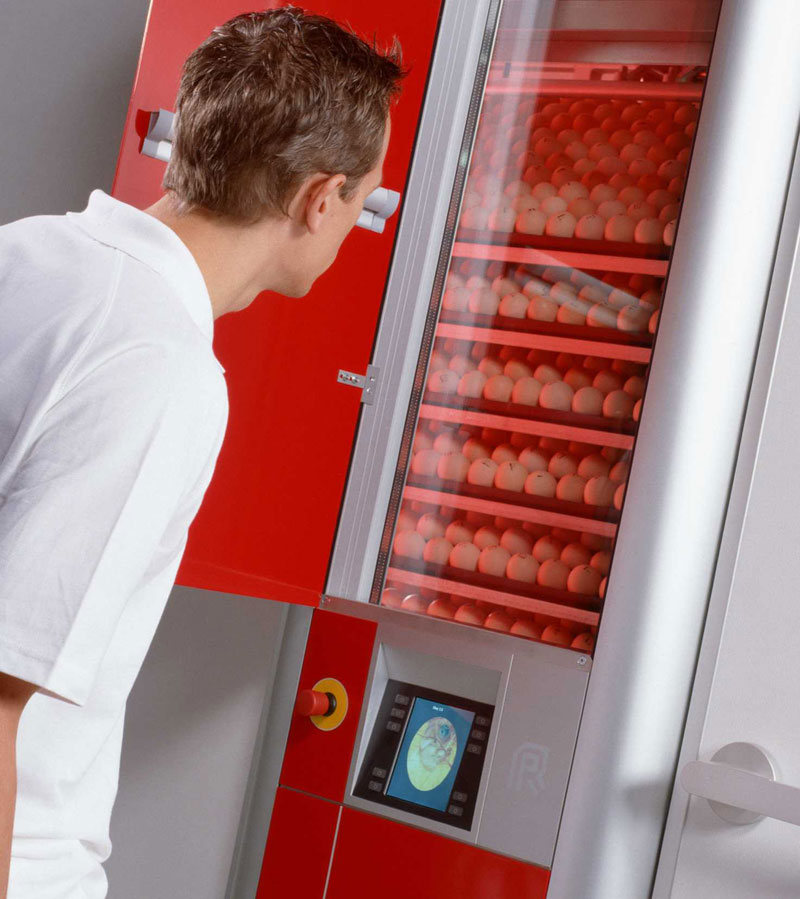
Hatchery
Hatchery
The hatchery is a special building with controlled ventilation. It contains machines for holding and incubating a large number of eggs. The hatchery is designed with hygiene in mind and is laid out so that there is little chance of any contaminating organisms travelling back from hatched chicks to eggs brought in later.
Stages of incubation
First Stage of Incubation
The first stage lasts for 18 days and is called “setting”. During setting, the eggs are placed on special trays which can be tilted through 90 degrees, from side to side. The temperature and humidity of the air in the setter is controlled so that conditions inside each egg are suitable for the growth and development of the chick.
Second Stage of Incubation
On the 18th day, eggs are transferred to a different tray, which cannot be tilted, and placed in another machine called a “hatcher”. Eggs are transferred to hatchers so that hatching chicks do not contaminate other batches of eggs being incubated. The hatchers can then be thoroughly cleaned after every hatch. By the end of the 21st day, all chicks have hatched and are ready to be removed from the machine. They are taken to a special room and removed from the hatcher tray. They are then placed in chick boxes (usually up to 100 in a box) ready for delivery to a farm.
Candling of eggs
Candling of eggs is done after 5-8 days of incubation to examine for the presence of any infertile eggs. It is the easiest way to check on the development of the chicks inside the eggs.
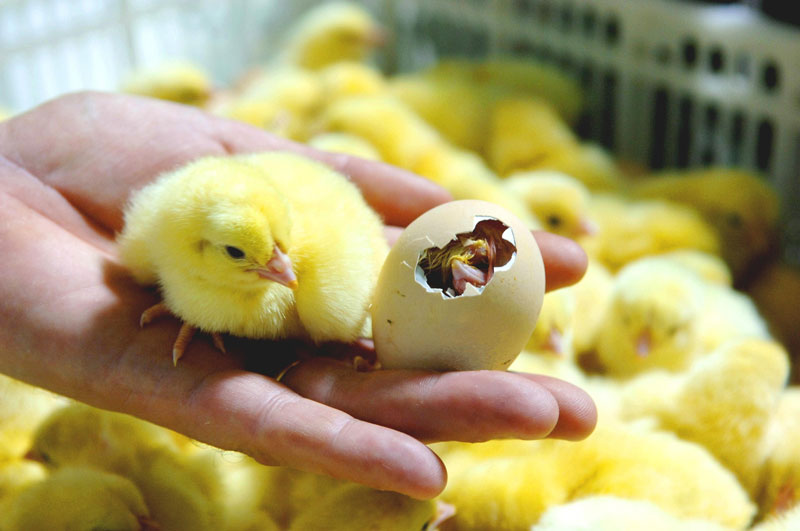
Hatching chick
Chick sexing
Sexing allows separation of male and female chicks. This can be done by:
- Visual examination, (called vent sexing) either by checking the structures in the chick’s vent with the naked eye or by inspecting the internal sexual organs with a special lamp.
- Most breeds can now be sexed by checking the feather colour or the degree of growth of wing feathers. Genetic selection has been carried out to ensure that these differences between sexes are distinctive.
Layer chicks are always sexed, as the females are kept while the males are killed. Breeders are usually sexed, as a greater number of females to males are kept for breeding purposes. Meat chickens are normally left unsexed, as both sexes are usually reared together.
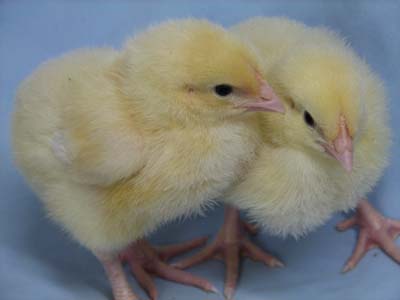
Day old chicks
Other procedures
Some vaccines can be administered in the hatchery. In meat chickens, all the required vaccines are administered in the hatchery before delivery to a farm. Beak trimming is sometimes carried out and in some breeds, the comb of the cockerels is trimmed (called dubbing). These procedures may seem cruel but they are carried out to prevent further injury later in life. Beak trimming is done in layer chicks to prevent pecking other birds, or cannibalism. Dubbing is done to prevent injuries to the comb which can result from fighting.
Chick requirements
The baby chick must be kept warm as it does not have the ability to maintain a constant body temperature. The chicks are transported in chick boxes which are designed to conserve heat while allowing air movement. The room where chicks are held in the hatchery and the truck which delivers them to the farm are also designed to keep the chicks both warm (32-34oC) and ventilated. There is enough food and water in the yolk to keep the chicks alive for about three days, but best results are obtained if they can eat and drink as soon as possible. When placed on the farm, they must be kept warm and have feed and water available at all times.
Breeder farm sequence
The breeder farm produces fertile eggs that will be hatched in a hatchery.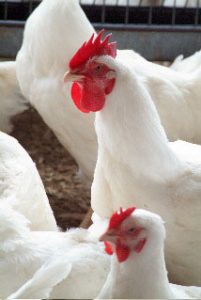
Brooding
Male and female chicks are usually reared separately until about 4-5 weeks of age. They are then reared together so that they can work out who is boss (adjust the pecking order), which means they will be less likely to fight with one another later on.
Growing
The growing period for layer breeders is from five to 20 weeks of age and is about four weeks less than for meat breeders. During the growing period, feed is restricted to avoid overconsumption and, for layer breeders, to improve egg production. It is even more important for meat breeders because they become too fat to breed efficiently if on full feed. Restricted feeding begins at about six weeks of age and continues until birds have commenced laying. When birds are at 5-10% egg production, a breeder ration is supplied. Birds that have been grown on restricted feed are often called ‘control fed’.
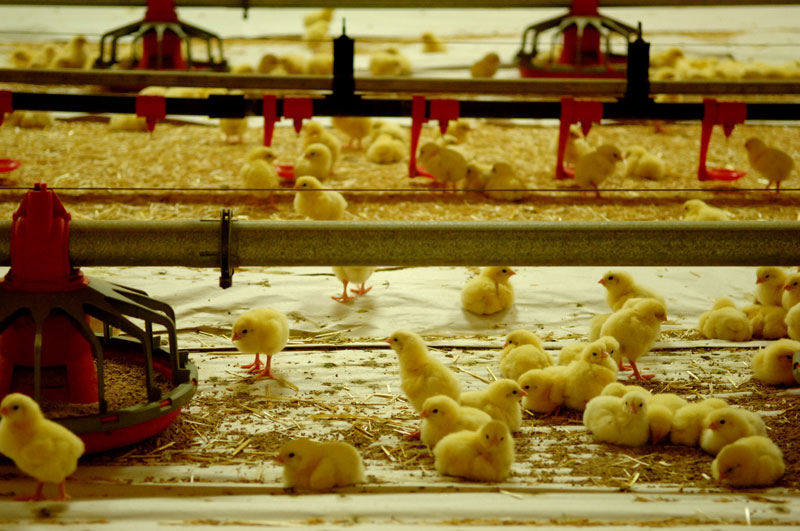
Broiler breeder chicks
Housing
Chickens reared for breeding purpose are usually raised on litter floors similar to those used for meat chickens. They are transferred to specially designed breeder sheds, also with litter floors, at approximately 18-22 weeks of age. The sheds are usually divided into small sections which are suitable for about 200 hens to minimise fighting. Nests are placed in the shed, usually in the centre, so that the hens are attracted to the dark areas of the nest to lay their eggs.
Mating
Cockerels will mate with a number of hens and about 10% of cockerels to a group of hens is enough to achieve excellent fertility rates. A surplus of cockerels (15%) is placed at first and they are culled down to 11% at maturity to allow a loss of 1% over their lives. Cockerels can be fed a cheaper diet than hens and it’s a common practice to have additional cockerel feeders placed at a greater height than feeders containing hen feed.
Collection
Fertile eggs are collected as soon as possible after laying for reasons of hygiene (if the eggs are left in the nests for too long a time they are more likely to have manure spread on them or be damaged). Regular collection also protects the eggs from the heat of the day. Although it is best not to clean eggs at all, eggs can be cleaned when collected by wiping with a dry cloth or steel wool. Wet cleaning is undesirable as it removes the protective cuticle from the shell. Fumigation by formaldehyde gas is carried out as soon as possible after collection, usually at the farm or sometimes at the hatchery, to kill surface bacteria without damaging the egg.
Incubation and hatching
Eggs are set in trays marked with the shed of origin so that any problems can be traced back to the source. Hatching performance is also closely monitored and the end product is a healthy chick which goes on to become a commercial layer or meat chicken.


